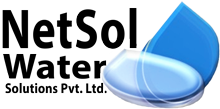The Latest Trends in Industrial RO Plant Automation and Control
Reverse osmosis plants represent complex systems with numerous process parameters and variables impacting performance, efficiency, and product water quality. Increasingly, industrial RO plants are using sophisticated automation and control technologies to enhance operations, optimise costs, and improve reliability. From advanced instrumentation and monitoring capabilities to predictive process controls integrating machine learning, new digital solutions drive the evolution of "intelligent" RO plants. This article explores cutting-edge automation and control trends optimising industrial desalination and high-purity water production.
Intelligent Instrumentation and Monitoring
At the most fundamental level, deploying smart instrumentation with remote monitoring and automated data logging elevates RO plant operations above manual methods. Digital instruments and sensor networks continuously track critical metrics like pressures, flows, conductivity, pH, ORP, and more across pretreatment, membrane separation, and post-treatment processes. High-resolution data visibility reveals process dynamics and pinpoints drifting conditions before upsets occur.
Intelligent sensors built with self-diagnostics provide real-time performance monitoring and predictive alerts. For instance, conductivity probes paired with tomographic monitors identify membrane surface fouling and scale formation. Differential pressure instruments detect cartridge filter loading. Predictive maintenance leveraging IoT connectivity minimises unplanned shutdowns by scheduling timely cleaning and parts replacements. Overall, smart networked instrumentation replaces laborious manual data rounds while reducing operational costs and risks.
Model-Based Process Optimization
Beyond enhanced monitoring capabilities, RO plants utilise sophisticated model-based and model-predictive control systems optimised for desalination and high-purity water processes. Digital twins and first-principle simulation models dynamically calculate optimal setpoints for critical parameters like membrane flux, recovery rate, permeate quality, and pretreatment dosing based on fluctuating feed conditions and operational constraints. Model-based predictive controllers continuously adjust and fine-tune operations to minimise energy consumption while maximising production throughput.
Simultaneously, real-time simulation models estimate membrane scaling risks to initiate calculated cleaning sequences and adjust anti-scalant dosing automatically. Some models integrate computational fluid dynamics simulations to troubleshoot flow distributions and complex hydrodynamic phenomena. Increasingly, machine learning models trained on historical operating data provide highly accurate soft sensor predictions for key parameters not directly measured. Overall, layering computational process modelling with feedback control realises substantial efficiency and productivity gains compared to heuristic operating methods.
AI-Driven Asset Performance Management
On the cutting edge, industrial RO plants are incorporating artificial intelligence and machine learning techniques to optimisethe total cost of ownership across the entire facility's lifecycle. AI-driven asset performance management employs hybrid physics/data-driven modelling to continuously evaluate plant reliability, efficiency, emissions, and costs under dynamic conditions. By ingesting performance data from IIoT sensor networks and integrating first principles with machine learning models like neural networks, AI/ML algorithms autonomously identify reliability risks, recommend mitigations, and adaptively adjust operations for the highest profitability.
AI/ML applications in desalination range from membrane fouling prediction using infrared spectroscopy inputs and process timing optimisation to energy consumption modelling and predictive maintenance planning. Generative AI capabilities could eventually synthesise human-like insights, automate reporting, and suggest design improvements. While still an emerging domain, AI has immense potential to streamline desalination asset reliability, sustainability, and cost management in highly complex operations beyond traditional rules-based automation approaches.
Conclusion
Industrial reverse osmosis desalination is evolving rapidly from manually-intensive operations to highly automated and intelligently controlled processes. Underpinned by smart instrumentation and the industrial internet of things, intelligent RO facilities employ model-based optimisation, predictive controls, and increasingly AI/machine learning to maximise product water quality, throughput, and cost efficiency. As automation technologies mature, operational reliability improves while enabling lights-out automated operation.
Nonetheless, deploying automation across complex processes with substantial design variations requires customised solutions and skilled implementation. Plant owners still face change management challenges with training requirements and workforce hesitancy. However, competitive pressures ultimately demand facilities adopt cutting-edge digital controls to remain economically viable and environmentally sustainable producers of critical water supplies.
To explore customised commercial RO plants, Industrial RO plants, ETP or STP solutions for your needs in your areas and nearby regions, contact Netsol Water at:
Phone: +91-965-060-8473, Email: enquiry@netsolwater.com



